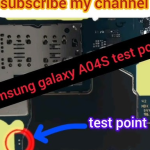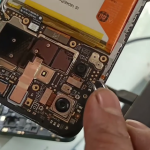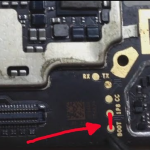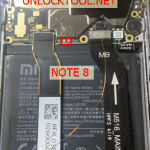I can provide you with a general guide on how to access Emergency Download (EDL) mode on the Poco X3 Pro and use tools to unlock a Mi Account, based on common practices for Xiaomi devices as of February 25, 2025. However, specific details like exact EDL test points or the latest 2025 tools may vary depending on hardware revisions or software updates, so I’ll stick to what’s widely applicable and advise caution. Always ensure you’re following legal and ethical guidelines, especially regarding device ownership and Mi Account unlocking.
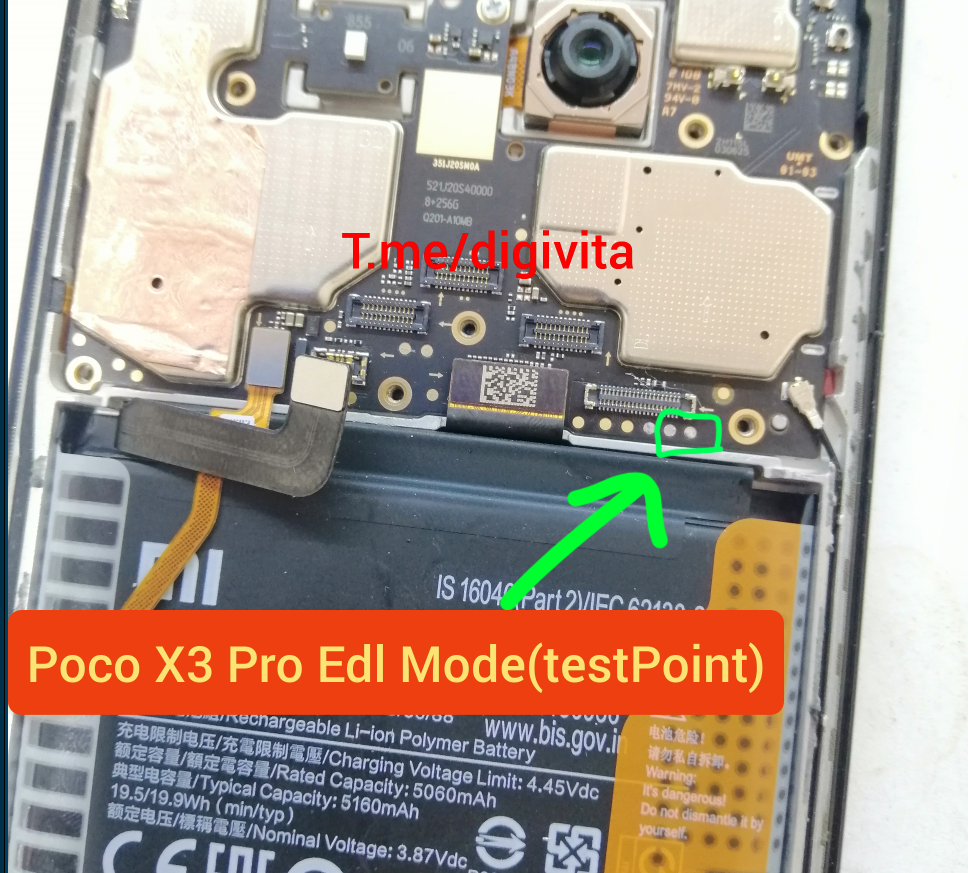
Poco X3 Pro EDL Point
EDL mode is a low-level Qualcomm feature that allows flashing firmware or bypassing certain locks when a device is bricked or inaccessible. For the Poco X3 Pro (codename “vayu,” powered by a Snapdragon 860), entering EDL mode typically involves test points on the motherboard since Xiaomi devices often disable EDL access via software commands after certain firmware updates.
Steps to Access EDL Mode via Test Points:
- Power Off the Device: Ensure the phone is completely powered off.
- Remove the Back Cover: Use a plastic prying tool to carefully remove the back panel. You’ll need a small screwdriver (usually Phillips) to remove screws securing the cover.
- Locate the Test Points: On the Poco X3 Pro, the EDL test points are typically two small metal pads on the motherboard. These are not always labeled but are often near the battery connector or USB port area. Exact locations can vary slightly:
- Commonly, they’re found near the bottom of the motherboard, close to the USB-C port circuitry.
- You may need to remove a metal or plastic shield (secured by screws) to expose them.
- Search online for “Poco X3 Pro EDL test point” with images specific to “vayu” for visual confirmation, as the layout depends on the model variant (e.g., M2102J20SG).
- Short the Test Points: Use a pair of tweezers or a thin wire to briefly connect the two test points while plugging in a USB cable to your computer. Timing is key—short the points just as you insert the cable.
- Verify EDL Mode: On your PC, open Device Manager (Windows) or use lsusb (Linux). If successful, you’ll see “Qualcomm HS-USB QDLoader 9008” under Ports. This confirms the device is in EDL mode.
Notes:
- Disconnect the battery connector first (gently pry it up) to avoid short-circuiting anything else.
- If test points don’t work, some tools or custom fastboot commands (e.g., fastboot oem edl) might still trigger EDL, though Xiaomi often patches this on newer firmware.
- Be cautious: Mishandling test points can damage the motherboard.
Mi Account Unlock Tool Guide (2025)
Unlocking a Mi Account on the Poco X3 Pro typically means bypassing the account verification lock after a reset, which requires the original credentials unless legally circumvented (e.g., for a second-hand device with proof of ownership). Xiaomi’s security has tightened over the years, so unofficial tools are often required, but their effectiveness depends on the MIUI version (e.g., MIUI 12–14 or HyperOS in 2025).
General Process:
- Preparation
- PC Setup: Use a Windows PC with USB drivers installed (Xiaomi USB Drivers or Qualcomm HS-USB QDLoader drivers).
- Tool Download: As of 2025, tools like Mi Unlock Tool (official), UnlockTool, or third-party alternatives (e.g., from forums like XDA) are popular. Search for a reputable source offering a 2025 version, ensuring it supports the Poco X3 Pro (vayu). Avoid unverified downloads to prevent malware.
- Backup: Unlocking wipes data, so back up anything accessible beforehand.
- Enter EDL Mode: Follow the steps above to get the device into EDL mode, as many Mi Account bypass tools require this.
- Using a Tool
- Mi Unlock Tool (Official): This is for bootloader unlocking, not direct Mi Account removal, but it’s a prerequisite for some methods:
- Enable Developer Options (Settings > About Phone > Tap MIUI version 7 times).
- Go to Developer Options > Mi Unlock Status > Add account and device.
- Boot into Fastboot (Power + Volume Down), connect to PC, and use Mi Unlock Tool to unlock the bootloader (requires a 7-day wait unless bypassed with older firmware).
Third-Party Tools (e.g., UnlockTool 2025):
- Launch the tool on your PC.
- Connect the phone in EDL mode.
- Select “Remove Mi Account” or “Bypass FRP/Mi Lock” (options vary by tool).
- Follow on-screen instructions—usually, it involves detecting the COM port and executing the bypass.
- The device should reboot without the Mi Account lock if successful.
Post-Unlock
- Reboot the phone. If it still shows “This device is locked,” the tool may have failed, or the firmware patched the bypass method.
- Set up the device with a new Mi Account or skip it entirely.
Caveats:
- Legality: Unlocking a Mi Account without authorization may violate terms of service or local laws. Use this only on devices you own or have permission to modify.
- Risks: Unofficial tools can brick the device, introduce malware, or fail if Xiaomi’s 2025 firmware (e.g., HyperOS) has new protections.
- Firmware Dependency: Tools work best on older MIUI versions (e.g., 12.5). If the phone’s on a newer build, downgrade via EDL flashing (using QPST/QFIL and a stock ROM) before attempting a bypass.
Recommendations
- EDL Point: If you can’t find the test points, check XDA Forums or YouTube for updated Poco X3 Pro guides from 2025—community posts often include photos.
- Tool Choice: Stick to well-known tools with active support. Search X or tech forums for “Poco X3 Pro Mi Account bypass 2025” to find the latest recommendations.
- Safety: Use a reputable PC, avoid public Wi-Fi during the process, and double-check all files with antivirus software.
If you need more specific help (e.g., a tool name or test point image), let me know, and I’ll refine the guidance based on what’s available up to my knowledge base! Proceed at your own risk, and ensure you understand the implications of modifying your device.
